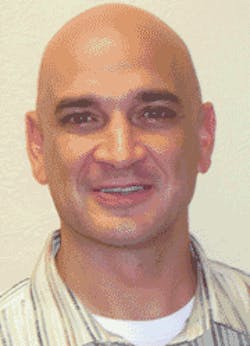Do you struggle?
by Michael Gradeless, DDSS
“I don’t think I’m the only dentist in America who struggles, and despite the appearance of success in journal articles, I believe there are many dental practices that are struggling to break even. Let’s hear about them.”
- Dr. Michael Fox
Dr. Gradeless: I received this letter from Dr. Michael Fox after I interviewed Dr. Princey Rekhi (May Dental Economics, Page 64). I believe Dr. Fox is absolutely correct. Some new dentists achieve amazing success, most new dentists struggle and ultimately become successful, and a few struggle forever. This is called a “bell-shaped curve.” I highlight successful new dentists in this column because I hope we can learn from them, but sometimes it helps to learn from each other’s mistakes. There are definitely reasons that a practice struggles. If we hear Dr. Fox’s story maybe we can find a way to move our practices to the top of the bell-shaped curve. Here is his story.
Dr. Fox: I read your interview with Dr. Rekhi with great interest. I believe that my practice is doing everything his practice is doing, and I am confused how one practice can be considered highly successful while another that pays great attention to planning fails. All the difficulties he faced seemed to have no effect on the success of his practice.
My own practice has not suffered any of these challenges, yet it struggles to break even. I provide high-quality dentistry in longer appointments. We have a fully digital and paperless office with a location and facility that is the envy of most of my colleagues. I have a small, highly trained staff, we offer outside financing, and I am the only general dentist in town who offers IV sedation and pediatric sedation.
Despite our best attempts, we cannot break free from insurance limitations and exclusions. The majority of our patients are here because we are in network with their insurance. When we drop a plan, we lose those patients when they learn we are no longer in network. The patients migrate to any office that is in network even if it means sacrificing comfort, quality, and convenience, and a friendly, knowledgeable staff. The patients seem unconcerned about quality and seem totally focused on where they can find cheap dentistry.
I would like to read an article that profiles a failing practice for a change. From the current articles in the dental journals, one gets the impression that all dentists are wildly successful no matter how they practice or what challenges they encounter. One also gets the impression that it is easy to drop all insurance and do well as a fee-for-service dentist. When I dropped insurance plans, I lost 700 of my 1,000 patients. The reality seems to be that the dentist who does only what insurance pays for and offers 30-minute prophylaxis appointments rakes in the cash. I have not gone to that extreme, but my involvement in insurance leaves me writing off everything that might be take-home pay for myself.
Marketing is also a struggle. I have a full-page phone book ad designed by a professional ad agency. While the telephone sales rep showed me a stack of statistics that claimed at least a 4:1 return on the cost of an ad, my experience is that I have gained exactly one patient from my ad in the last nine months.
Show me an article about a failing practice and I’ll show you a large number of dentists who will appreciate hearing about their colleagues who are having the same difficulties making a living as they are.
Dr. Gradeless: Thank you for sharing this story, Dr. Fox. It takes courage to admit that everything is not great in your practice. Admitting this is the first step to improvement. Let’s look first at the areas where you are struggling and then develop a short action plan of where you need to work on your practice.
There are four things you must do to make your practice successful. If your practice is failing, you are failing in one or more of these areas. The four requirements for success are:
- Creating the vision
- Strategic planning
- Building systems
- Leadership
The greatest problem I see in your story is in strategic planning. While you may have a very strong vision of what you want your practice to become, you must also carefully time each step toward achieving your plan. For example, if you have only 1,000 active patients, it is definitely not the time to drop all of your insurance plans and lose 700 patients. Before dropping insurance, each plan must be evaluated as to its impact on the practice, then phase the project over time to minimize the impact to the practice.
As compelling as your vision may be, you won’t automatically achieve it right away. Your vision may include longer appointments, staff training, digital radiography, and an enviable facility, but this also means high overhead. As you have discovered, high overhead and discounted fees do not fit together well. These choices have already been made, so your action plan must find a way forward.
In your case, the marketing system is also broken. The major marketing system is the insurance plans where you are trading discounted fees for access to patients, and this is at odds with your vision. A custom-designed, full-page phone book ad is very expensive, and in your case has been very ineffective.
The first step of the action plan involves strategic planning. You must develop a cash flow projection and annual plan. The most important order of business is to plan to earn enough money in the coming year to pay all practice bills as well as personal expenses. If you are to have any hope of earning enough money to do this, you must first know how much that is.
Start with a profit and loss statement from the practice. If you do not have a statement from a full year, project the numbers to an annual basis. Next, examine each category of expense and estimate how much you will spend next year. For example, if you spent $100,000 on staff salaries last year and you gave everyone a raise last month, your estimate for next year’s expense might be $110,000. Review every expense category to find where you might save some money next year, but the reality is that most areas will cost more.
Once you have totaled all the projected expenses for next year, add the amount you need to personally earn, and then multiply this number by a factor to cover your collection loss. (For example, if you normally collect only 90 percent of what you produce, multiply your projection by 1.1.) This number is the amount of dentistry you absolutely must produce in the next year to cover all your expenses. Knowing this number allows you to manage the practice strategically rather than making random decisions. The challenge for your leadership abilities is to share this production goal with your staff and inspire them to help you achieve the practice goals.
Dropping insurance plans may occur as long as you are ahead of your production goals. As much as you may want to drop plans immediately, this is not feasible as long as you are below goal. To begin dropping plans, categorize them based on how many patients are in the plan, the fee schedule, and how much of your production comes from each plan. Drop the plans that have the least economic impact to your practice first. Only drop the next plan when the practice has grown enough to offset the projected production loss. Unfortunately, getting out of all the insurance plans may take two or more years.
Marketing your practice is very much a hands-on, do-it-yourself project. Professional marketing has a very high cost factor. While I still recommend professional marketing, the majority of your marketing can have a much lower cost factor. Asking existing patients for referrals, giving presentations at schools, and becoming involved in community organizations are all time-tested and low-cost marketing strategies. There are many resources for marketing help, ranging from hiring professionals to borrowing books from the library. Once again, plan your year by creating a marketing calendar and budget.
Dr. Fox, thank you for your letter. I have a special place in my heart for those dentists who admit they are struggling. I remember being behind on all my bills and struggling with money, stress, and self-image. I was the poster child of the unsuccessful dentist, and I try to share my transformation in every article. The few hundred words in this article will not solve the fundamental problems in a practice, but I did it, and there is a road map that can lead to success. The old saw is that you should work on your practice, not in it. If you are working on your practice, you need to work on your vision, strategic planning, building systems, and leadership.Dr. Michael Fox graduated from UC San Francisco School of Dentistry in 1995. He completed an AEGD residency in 1996 and served five years in the USAF before opening a private practice. He can be reached at (405) 359-0074 or by e-mail at [email protected].
Dr. Michael Gradeless, a 1980 graduate of Indiana University, practices preventive dentistry in Indianapolis with an emphasis on cosmetics and implants. He is an adjunct faculty member at Indiana University, where he teaches the Pride Institute university curriculum of dental management. He also is the editor for the Indiana Dental Association. Contact him at (317) 841-3130 or e-mail to [email protected].

